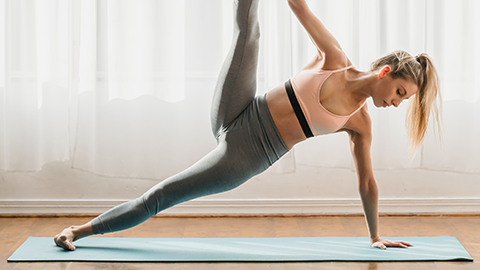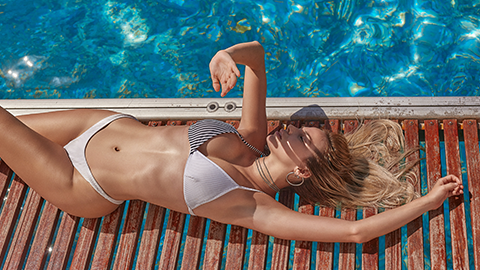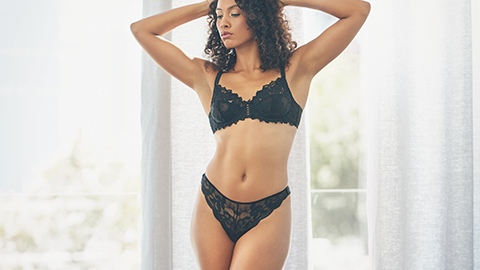Active wear has become increasingly popular in recent years, with many people opting for comfortable and stylish clothing options for their daily activities. However, with frequent use, it is important to know how to properly care for these garments, especially when it comes to washing them. Active wear en lavadora, or active wear in the washing machine, is a topic of interest for many individuals who want to keep their clothing in top condition.

When it comes to active wear, it is important to consider the materials used in the garments. Many active wear items are made with moisture-wicking fabrics, which are designed to pull sweat away from the body. These materials require special care when washing to preserve their effectiveness. Additionally, active wear often includes features such as compression and stretch, which can be compromised if not washed properly. Therefore, understanding how to properly wash active wear in lavadora is crucial for maintaining the quality and longevity of these garments.
There are many factors to consider when washing active wear, including water temperature, detergent choice, and cycle selection. While some garments may be able to withstand a regular wash cycle, others may require a delicate or hand wash setting. Furthermore, using the wrong detergent or fabric softener can damage the materials and reduce the effectiveness of the garment. By following proper washing guidelines, individuals can ensure that their active wear en lavadora remains in top condition and continues to provide the desired level of comfort and performance.
Understanding Active Wear Fabrics

Active wear is designed to be worn during physical activity, and as such, it needs to be made from fabrics that are durable, moisture-wicking, and breathable. Understanding the different types of fabrics used in active wear can help you make informed choices when shopping for workout clothes.
Polyester
Polyester is a popular fabric choice for active wear because it is lightweight, durable, and quick-drying. It is also resistant to wrinkles and shrinking, making it easy to care for. Polyester fabrics are often blended with other materials such as spandex to provide stretch and flexibility.
Nylon
Nylon is another common fabric used in active wear. It is lightweight, strong, and resistant to abrasion and tears. Nylon also dries quickly and is easy to care for. It is often blended with other fabrics such as spandex to provide stretch and flexibility.
Spandex
Spandex is a synthetic fiber that is known for its elasticity. It is often blended with other fabrics such as polyester and nylon to provide stretch and flexibility in active wear. Spandex is also resistant to perspiration and body oils, making it an ideal fabric for workout clothes.
Cotton
While cotton is a popular fabric for everyday clothing, it is not ideal for active wear. Cotton absorbs moisture and takes a long time to dry, which can leave you feeling uncomfortable during a workout. Cotton is also prone to shrinking and losing its shape over time.
Bamboo
Bamboo is a sustainable and eco-friendly fabric choice for active wear. It is lightweight, breathable, and moisture-wicking, making it ideal for workouts. Bamboo is also naturally antibacterial, which helps to prevent odors from developing in your workout clothes.
In conclusion, understanding the different types of fabrics used in active wear can help you choose the right clothes for your workouts. Whether you prefer polyester, nylon, spandex, or bamboo, there are plenty of options available that will keep you comfortable and stylish while you exercise.
Sorting Active Wear Before Washing

When it comes to washing active wear, sorting your clothes properly can make a big difference in maintaining their quality and longevity. Here are some tips on how to sort your active wear before washing.
By Fabric Type
Different types of fabrics require different care. For example, spandex and polyester blends should be washed separately from cotton and wool. This is because spandex and polyester are prone to pilling, while cotton and wool can shrink in high heat. By sorting your clothes according to fabric type, you can prevent damage and ensure that each garment receives the appropriate care.
By Color
Sorting your clothes by color is also important to prevent color bleeding. Active wear often comes in bright and vibrant colors, which can bleed onto lighter fabrics if not washed separately. To prevent this, sort your clothes by color and wash them in separate loads.
By Soil Level
Sorting your clothes by soil level can help prevent cross-contamination of bacteria and odor. Clothes that are heavily soiled, such as those worn during high-intensity workouts, should be washed separately from lightly soiled clothes. This will prevent bacteria and odor from spreading to other clothes and ensure that each garment is thoroughly cleaned.
By following these simple sorting tips, you can help extend the life of your active wear and keep your clothes looking and smelling fresh.
Choosing the Right Detergent

When it comes to washing active wear, choosing the right detergent is crucial. The wrong detergent can damage the fabric, causing it to lose its elasticity and moisture-wicking properties. Here are some things to consider when selecting a detergent for your active wear.
Detergent Types for Active Wear
Not all detergents are created equal. Some contain harsh chemicals that can damage the delicate fibers of your active wear. It’s important to choose a detergent that is specifically designed for use on athletic apparel. Look for detergents that are labeled as “sport” or “active wear” detergents. These detergents are formulated to remove sweat, dirt, and odor while preserving the integrity of the fabric.
Another option is to use a natural detergent. Natural detergents are free from harsh chemicals and are gentle on your clothes. They are also better for the environment. Look for natural detergents that are specifically designed for use on active wear.
Dosage and Usage
Using the right amount of detergent is just as important as choosing the right detergent. Using too much detergent can leave a residue on your clothes, which can cause them to lose their moisture-wicking properties. On the other hand, using too little detergent can leave your clothes smelling less than fresh.
To determine the right amount of detergent to use, check the label on your detergent. Most detergents will have instructions for use based on the size of your load. Follow these instructions to ensure that you are using the right amount of detergent.
It’s also important to use the right washing cycle. Use a gentle cycle and avoid using hot water, as this can damage the fabric. Always wash your active wear separately from other clothes to prevent damage from zippers, buttons, and other hardware.
By choosing the right detergent and using it properly, you can keep your active wear looking and performing its best.
Washing Machine Settings
When it comes to washing your active wear, it’s important to use the right settings on your washing machine to ensure that your clothes are cleaned effectively without being damaged. Here are some guidelines to follow when selecting your washing machine settings:
Cycle Selection
Choosing the right cycle is crucial to making sure your active wear is cleaned properly. It’s recommended to use a gentle or delicate cycle to prevent any damage to the fabric. This cycle will typically have a slower spin speed and shorter wash time, which is ideal for delicate fabrics like those found in active wear.
Temperature Guidelines
The temperature of the water used to wash your active wear is also important. It’s recommended to use cold water to prevent any shrinkage or damage to the fabric. Hot water can cause the fabric to break down over time, which can lead to holes and tears in your active wear. If you need to use warm water, make sure it’s no higher than 30°C.
Load Capacity
Overloading your washing machine can cause damage to both your machine and your clothes. When washing your active wear, make sure you don’t overload the machine and that there is enough space for the clothes to move around freely. A good rule of thumb is to fill the machine no more than two-thirds full.
By following these guidelines for washing machine settings, you can ensure that your active wear is cleaned effectively without being damaged in the process.
Pre-Treatment of Stains
Identifying Common Stains
Before treating any stains on your active wear, it is important to identify the type of stain. Different stains require different pre-treatment techniques to effectively remove them. Here are some common stains found on active wear:
- Sweat stains: yellowish stains caused by the buildup of sweat and bacteria.
- Makeup stains: oil-based stains caused by makeup products.
- Grass stains: green stains caused by grass and other outdoor debris.
- Blood stains: red stains caused by blood.
Pre-Treatment Techniques
Once you have identified the type of stain, you can use the appropriate pre-treatment technique to remove it. Here are some effective pre-treatment techniques for common stains on active wear:
- Sweat stains: Soak the affected area in a solution of equal parts white vinegar and water for 30 minutes before washing in cold water.
- Makeup stains: Apply a small amount of dish soap directly to the stain and rub gently before washing in cold water.
- Grass stains: Mix equal parts hydrogen peroxide and dish soap, apply to the stain, and let sit for 30 minutes before washing in cold water.
- Blood stains: Soak the affected area in cold water for at least 30 minutes before washing in cold water with a small amount of laundry detergent.
By pre-treating stains on your active wear before washing, you can effectively remove them and keep your clothes looking new for longer.
Washing Active Wear
Active wear is designed to be durable and withstand rigorous physical activity. However, proper care is essential to maintain the quality and longevity of these garments. Washing active wear may seem like a simple task, but it requires attention to detail to ensure that the garments are cleaned thoroughly without causing damage.
Step-by-Step Process
To wash active wear, follow these steps:
- Check the care label: Before washing any garment, it is essential to check the care label for specific instructions. Some active wear may require hand washing or air drying to maintain their quality.
- Sort by color: Sort the garments by color to prevent bleeding and color transfer.
- Pre-treat stains: Pre-treat any stains with a stain remover or detergent before washing.
- Use cold water: Wash active wear in cold water to prevent shrinkage and damage to the fabric.
- Use a mild detergent: Use a mild detergent that is specifically designed for active wear to prevent damage to the fabric.
- Avoid fabric softeners: Fabric softeners can leave a residue on the fabric and reduce the moisture-wicking properties of active wear.
- Hang dry: Hang dry the garments to prevent damage from the dryer and maintain their shape.
Handling Delicates
Some active wear may have delicate fabrics or embellishments that require special care. To wash delicates, follow these additional steps:
- Use a mesh laundry bag: Place the delicate garments in a mesh laundry bag to prevent damage from the washing machine.
- Use a gentle cycle: Use a gentle cycle on the washing machine to prevent damage to the fabric.
- Avoid rubbing or twisting: Do not rub or twist the garments during washing or wringing to prevent damage to the fabric.
- Lay flat to dry: Lay the delicate garments flat to dry to prevent stretching or damage from the dryer.
By following these steps, active wear can be washed effectively without causing damage to the fabric or compromising the quality of the garments.
Drying Active Wear
After washing active wear, it’s essential to properly dry it to maintain its quality and functionality. Improper drying can lead to shrinking, stretching, and damage to the fabric. This section will offer tips for air-drying and machine drying active wear.
Air-Drying
Air-drying is the best way to dry active wear as it prevents damage to the fabric and maintains its shape. Here are some tips for air-drying active wear:
- Hang the clothes on a clothesline or hanger in a well-ventilated area.
- Avoid direct sunlight as it can fade the colors and damage the fabric.
- Turn the clothes inside out to prevent fading and damage to the print or design.
- Avoid using clothespins as they can leave marks on the fabric. Instead, use hangers or clips.
Machine Drying Tips
If air-drying is not an option, machine drying is an alternative. However, it’s important to follow some guidelines to prevent damage to the fabric. Here are some tips for machine drying active wear:
- Use a low heat setting to prevent shrinking and damaging the fabric.
- Avoid overloading the dryer as it can cause the clothes to wrinkle and not dry properly.
- Turn the clothes inside out to prevent fading and damage to the print or design.
- Remove the clothes from the dryer as soon as they are dry to prevent wrinkles and damage to the fabric.
By following these tips, active wear can be properly dried and maintain its quality and functionality.




